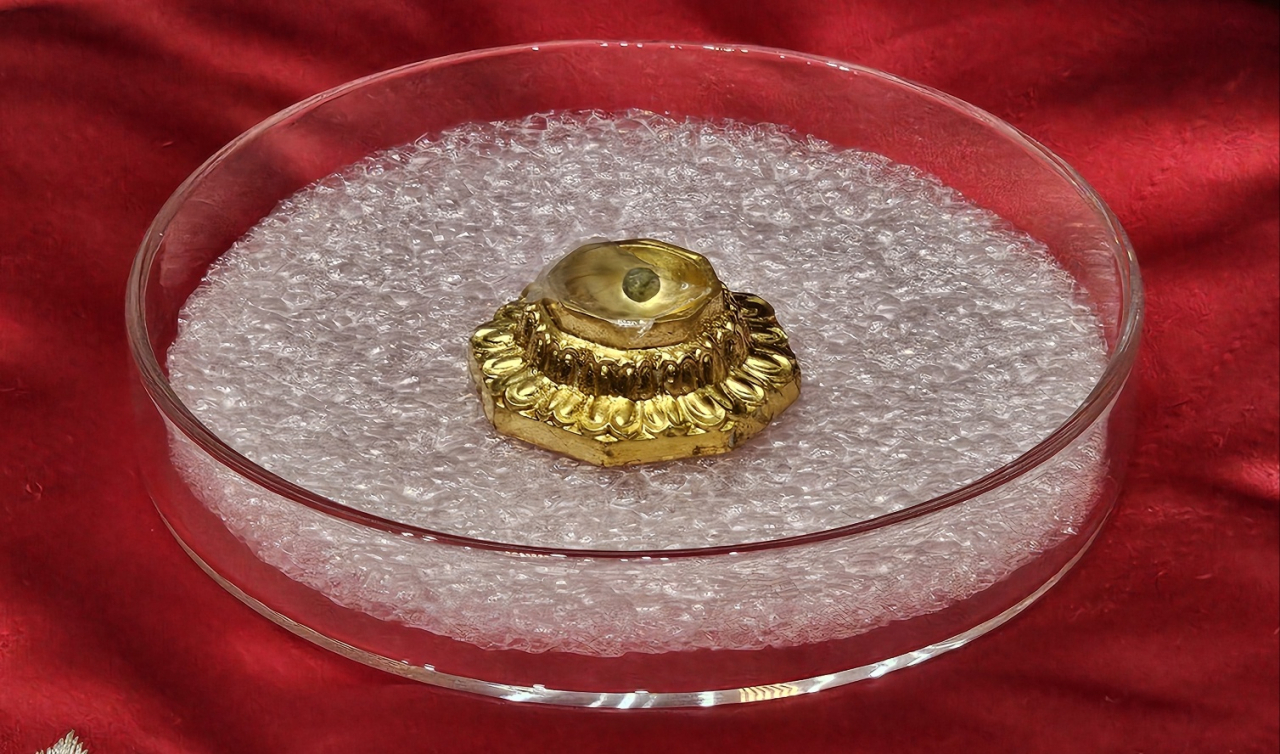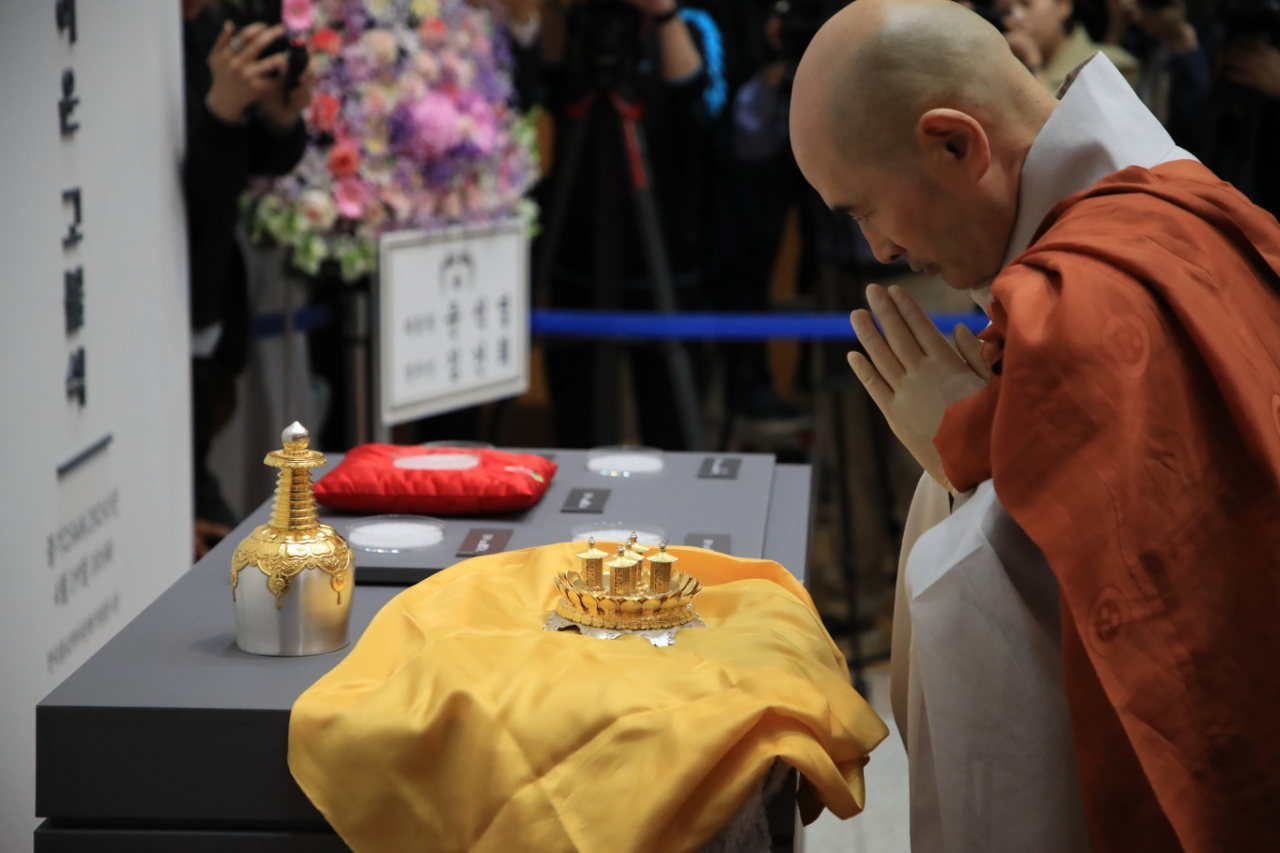 |
Cremated remains of the Buddhism founder Sakyamuni Buddha (Jogye Order of Korean Buddhism) |
A group of senior South Korean Buddhist monks entered the Memorial Hall of Korean Buddhism History and Culture in Seoul one by one on Friday, the tranquil mood interrupted only by the sounds of the camera crews that had come to record the event.
The solemn ceremony, presided by the Ven. Jinwoo, president of the Jogye Order of Korean Buddhism, Korea’s largest Buddhist sect, highlighted why the gathering mattered so much.
 |
A ceremony takes place to receive the remains of Buddhas at the Memorial Hall of Korean Buddhism History and Culture in Seoul on Friday. (Jogye Order of Korean Buddhism) |
The monks and Buddhist followers took turns studying the cremated remains of the Buddhism founder Sakyamuni Buddha, last seen some 600 years ago in the later years of the 14th century Goryeo Kingdom. The remains of two other Buddhas and two monks, called sarira, were kept sealed inside containers, known as reliquaries. They were too tiny to be taken out.
Jogye monks, including the monk overseeing the site believed to be the sarira’s home, brought the religious artifacts back Thursday in reliquaries specially made for the occasion.
After the one-day public viewing in Seoul, the returned sarira will be brought to Hoeamsa in Gyeonggi Province on May 19. Hoeamsa is the temple where the sarira are believed to have been kept originally.
How exactly the Buddhist objects were taken out of the country and sold by a dealer to the Museum of Fine Arts, Boston requires further research. Tracking the purchase, which took place in 1939, is an arduous task, Jogye Order officials said, noting that uncovering the paper trail would be difficult given that the norms governing such activity at the time were different from those of today.
Friday’s ceremony, which followed the sarira “donation” in person at the US museum three days ago, officially ends a 15-year effort by officials from the Jogye Order and Cultural Heritage Administration, the government body handling the matter, to have them repatriated to Korea.
For some time, the museum had been willing to hand over the sarira only, given their religious significance, a view rejected by CHA officials. The five reliquaries containing the sarira and the larger reliquary containing the five reliquaries would have to be returned as a set, the government had insisted.
A compromise was reached in early February. Jogye officials decided to accept the sarira donation and the CHA said it would work with the museum on pushing for a loan of the container.
How much progress has been made on negotiating such a loan is not publicly known. CHA officials have said communication is underway. The museum offered a more nuanced response, saying it would “consider opportunities for collaborative projects” once the donation is complete.
That is a cue to check again if everyone is on the same page, according to observers familiar with loan deals involving artifacts.







![[Today’s K-pop] Blackpink’s Jennie, Lisa invited to Coachella as solo acts](http://res.heraldm.com/phpwas/restmb_idxmake.php?idx=644&simg=/content/image/2024/11/21/20241121050099_0.jpg)